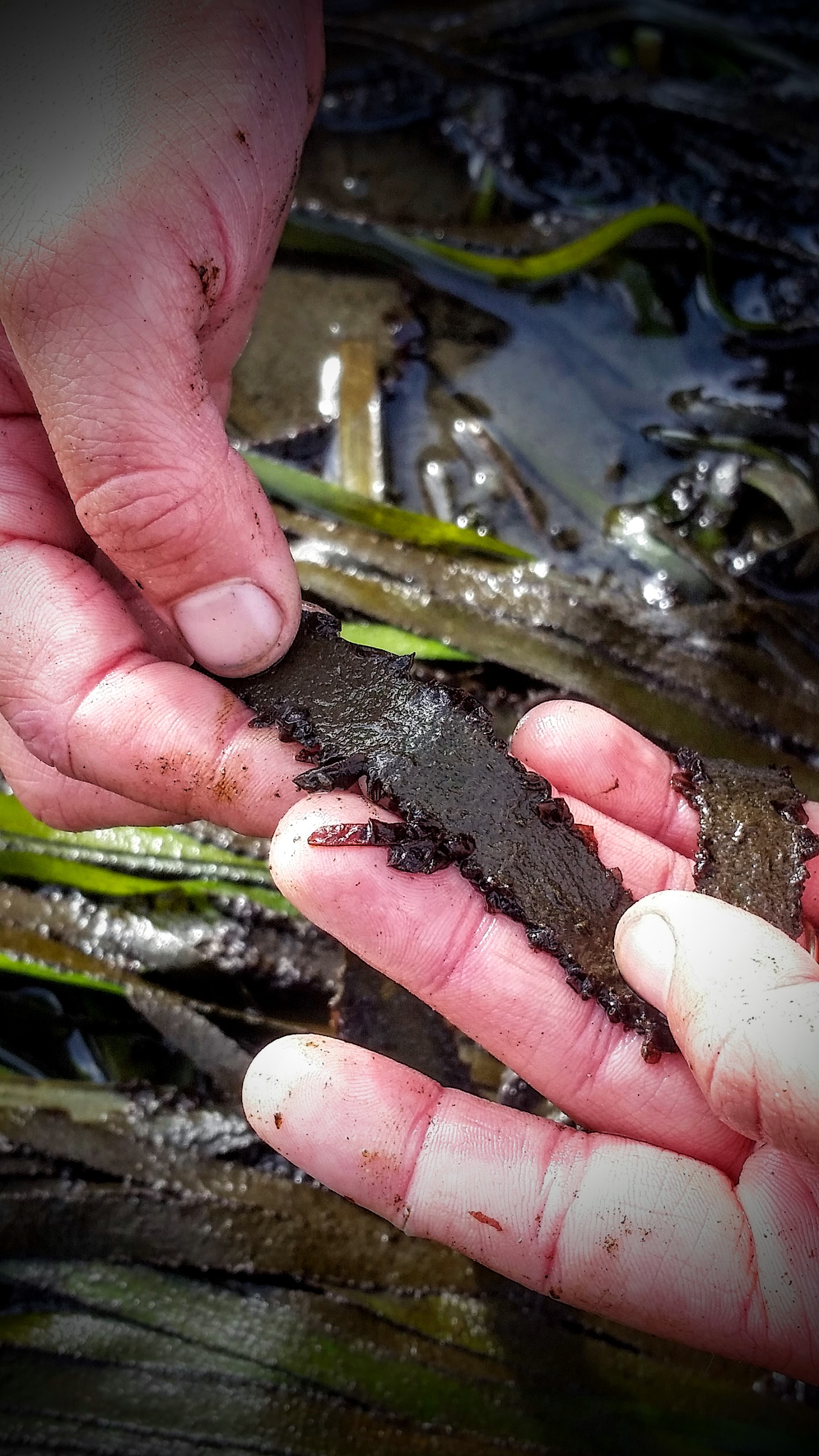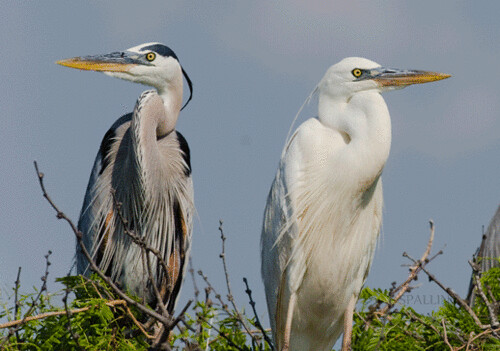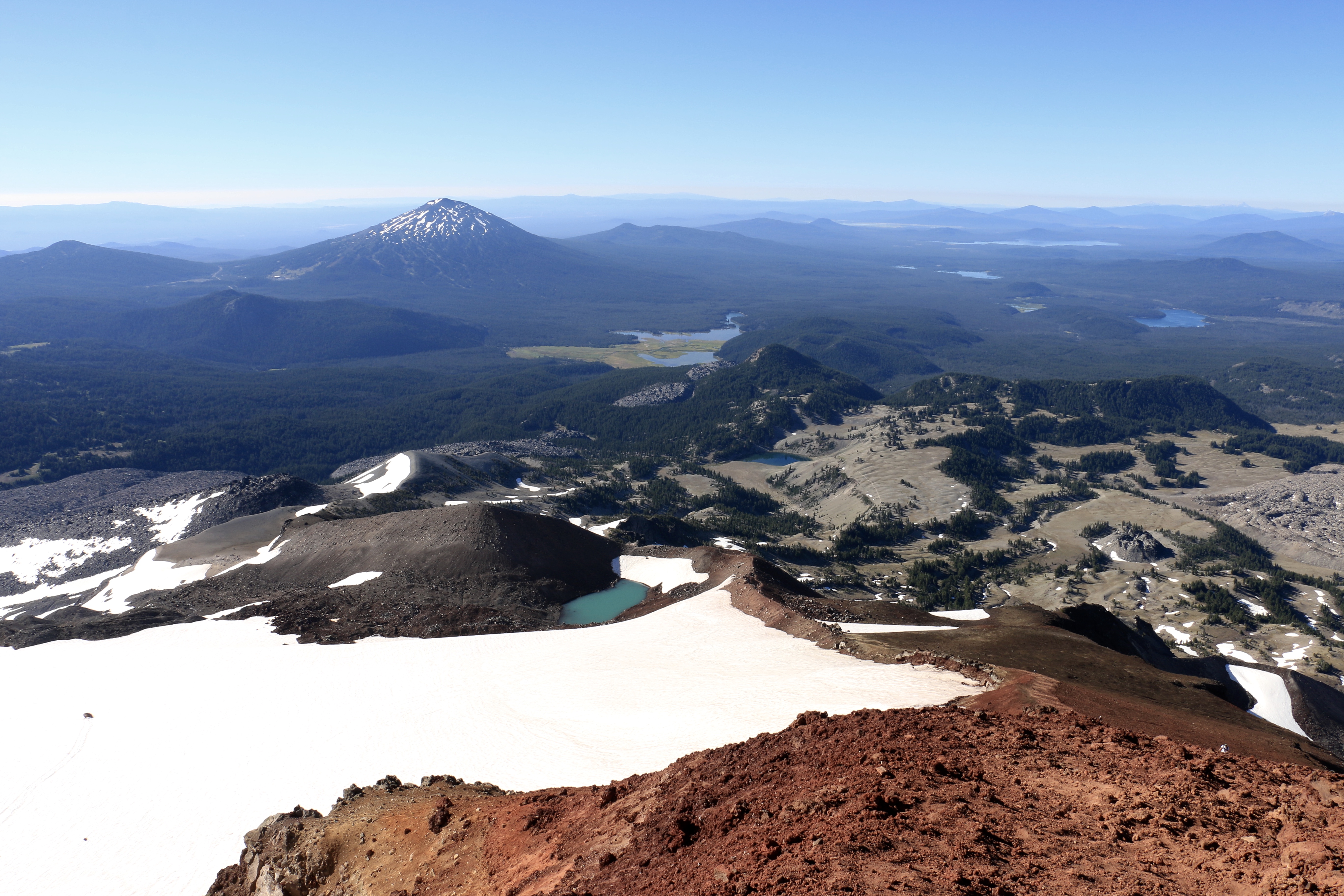Whales are neat. Well, that’s my opinion at least and I hope you feel the same way by the end of these short paragraphs. Recently, I’ve become so attuned to searching for whales while conducting visitor surveys on the Oregon coast that the visitors at Depot Bay ask me questions about the whales as I stand there in my ODFW hat. I graciously answer to the best of my ability, making it clear that I am far from an expert on the topic and then let them know that I am actually studying humans (but maybe we’re more or less one in the same).
Whale-watching zodiac.
I’ve been envious of the visitors who share stories about their whale watching tour in Depot Bay. It just so happens that the REU students who live next door were going whale watching this weekend and they invited the Sea Grant scholars to tag along for a discount price. I had heard a couple of months back about a whale researcher in Depot Bay, named Carrie. As it turns out, Carrie Newell was the one who generously offered the Hatfield interns a discount on a private whale-watching excursion early Sunday morning.

Carrie and the Hatfield interns spotting whales.
As if Carrie’s energy and passion for her work wasn’t encouraging enough, something that her coworker Captain Dan said out on the water really struck a cord with me. As we approached a female whale in our zodiac, she flashed her fluke and dove down, leaving everyone in a moment of silent awe. Captain Dan then started explaining to us how this whale (Ginger was her name) seems to always fluke and each of the resident whales in Oregon has their own identifiable characteristic. He said he even has suspicion that at least one of the whales intentionally tries to sneak up and startle everyone in the boat. It was then that Captain Dan said, “You know, I’ve learned a lot from Carrie and from the textbooks, but no one can teach you about the personality of these animals until you’re out here with them every day.”
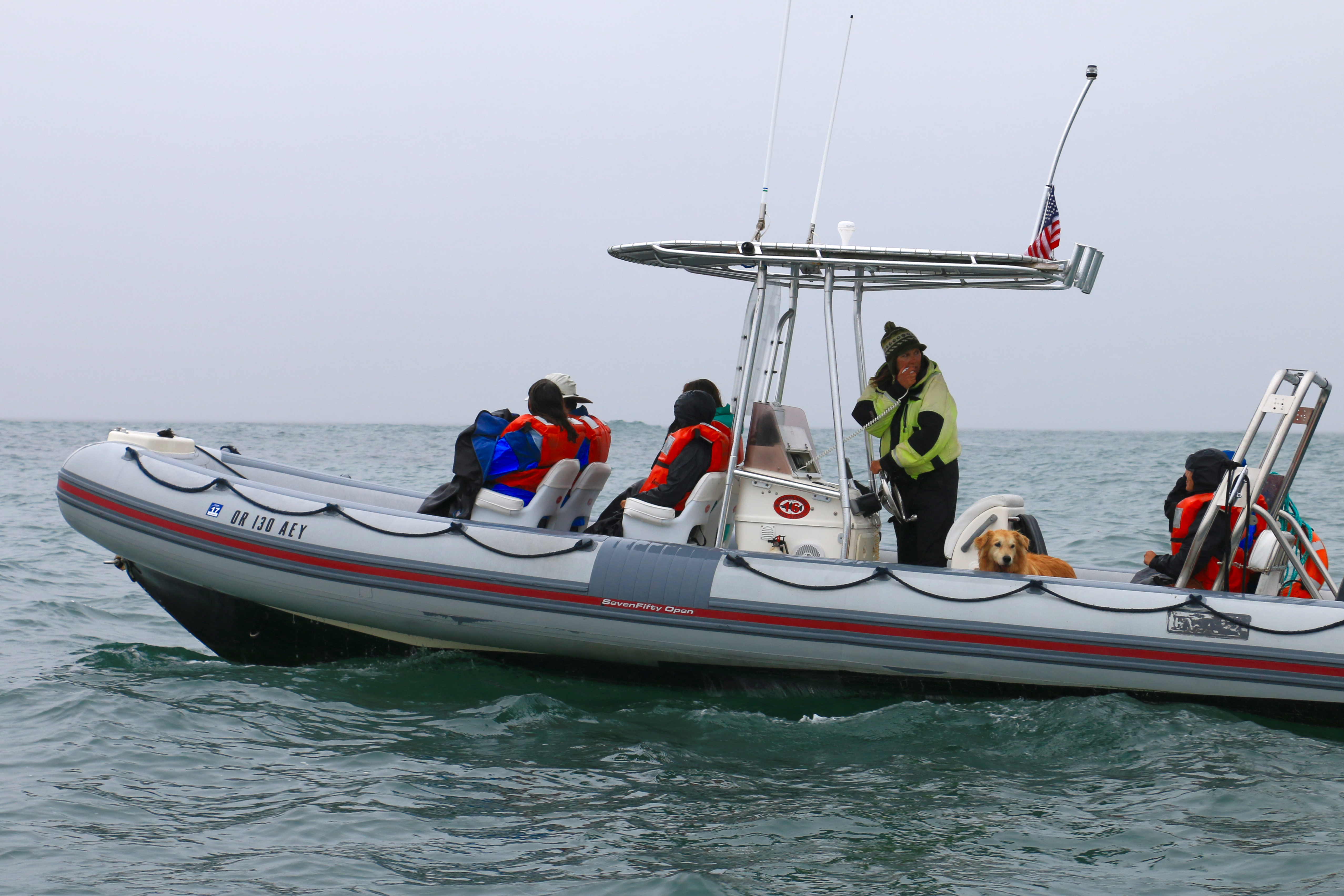
Carrie Newell and her first mate Kida.
I think what Captain Dan said resonated with me for a couple of reasons. First, whales are intelligent and social animals, just like humans. Humans tend to feel a strong connection to what they can relate to. Second, I am perpetually fascinated by how little we know about our expansive ocean and find it humbling to think about. Reflecting a little more deeply on the second thought, I realized individuality defines a lot more than a biology textbook could explain. If whales really are trying to playfully spook people in a boat as Captain Dan suspects, then perhaps they really are a lot more like us than we think.
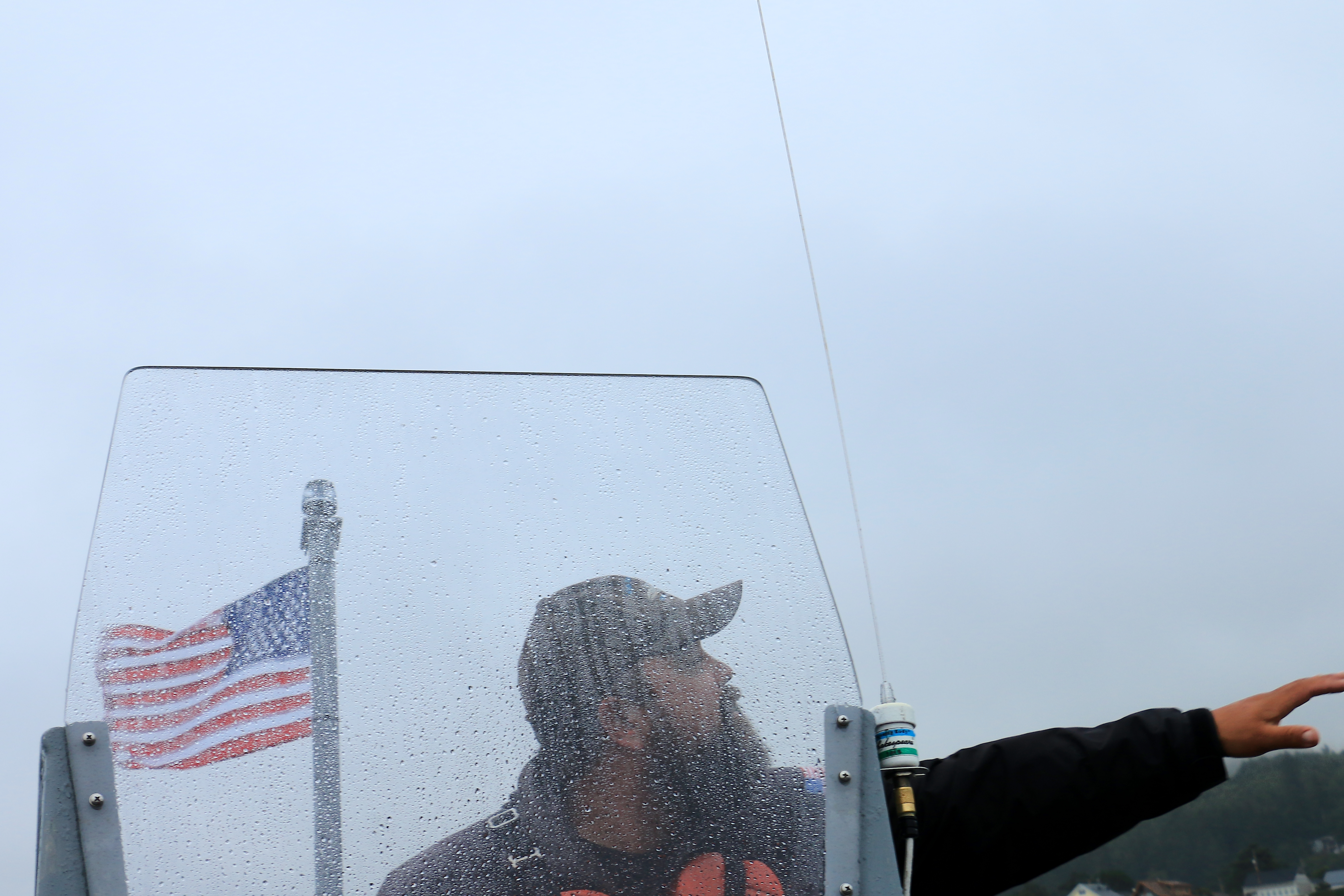
Captain Dan.
Over the years, humans and whales have had a relationship that some might call “complicated.” I think now, more than ever, through the powerful influence of media and the efforts of Greenpeace, people want to save whales and dolphins rather than exploit them as a natural resource. If we could all take the time to connect a little more closely with the environment around us, I think we might learn a lot from those who share this planet with us.
Fluke of Ginger the gray whale.


